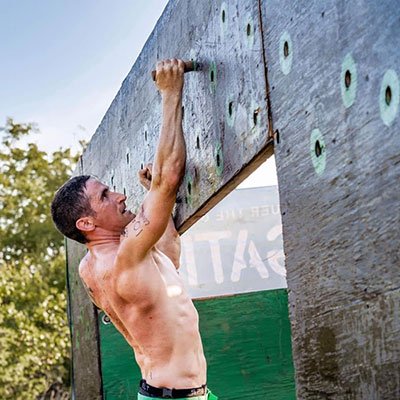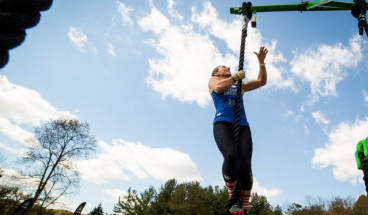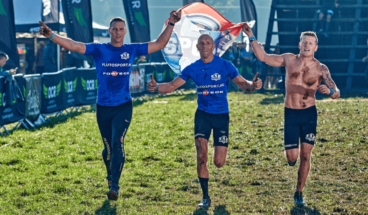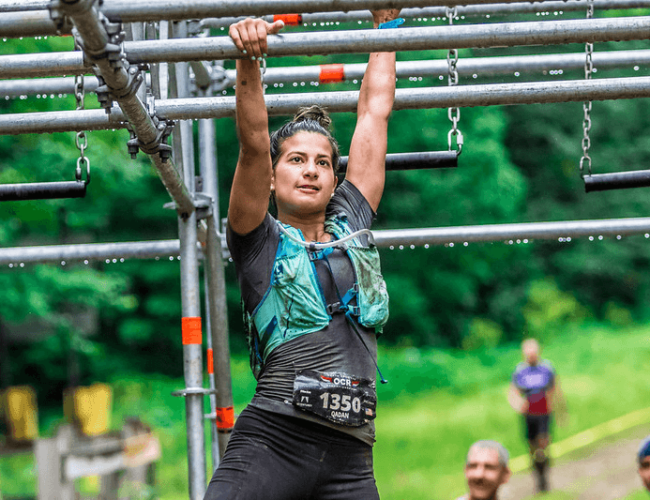
Dealing With The Rain In OCR Events
If you’ve run the Obstacle Course Racing World Championships (OCRWC) multiple years, chances are you have run in the rain at least once. The fall, historically when OCRWC occurs, often has a bit of rainy weather for part of the weekend. Here’s a couple of tips on dealing with the rain and how to come out of the weekend successful.
1. Prepare Ahead of Time
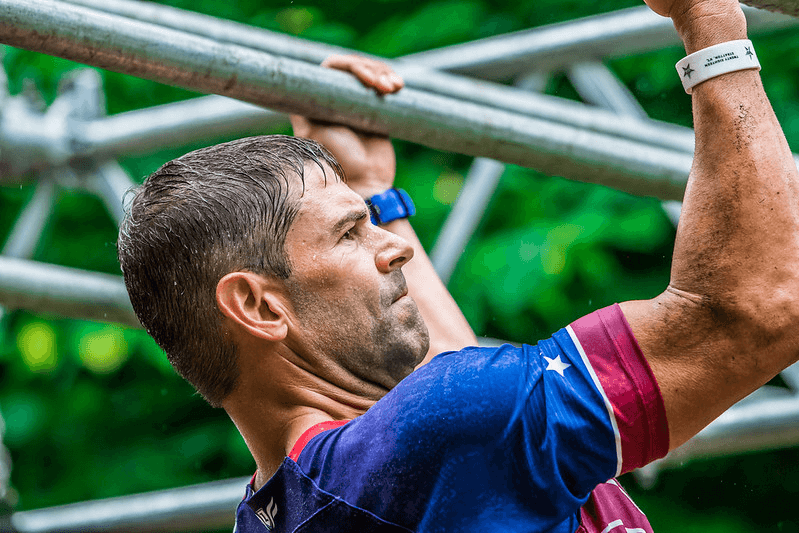
The easiest way to prepare for the rain is to prepare ahead of time by improving your grip strength above the minimum requirement for success. With so many obstacles and a variety of grips, it is hard to know when you are above the required level for success. The bottom line is no one ever comes out of a race and is like “I wish I had less grip strength,” so prepare the best you can.
A common question about preparation is, “Do I need to train by dipping your hands in water when doing obstacles?” I often cite the importance of specificity, however, for this one I don’t think it’s 100% necessary. If the rain is causing you to doubt your skills, you may want to practice this way to build your mental confidence. However at the end of the day, it is about grip strength. Those with better grip strength will be able to do wet obstacles with less challenges than others. It’s also hard to simulate the actual wetness of obstacles because it’s hard to make everything wet enough. The sun, dryness of your hands, dryness of other bars will often not make it as wet as when compared to actual rain when it is constantly dripping on the bars and your hands. All that being said, let’s get into some more specific tips you can actually use in the middle of the race.
2. Use Opposing Grips

My first and biggest recommendation for dealing with wet obstacles is using opposing grips. Rather than grabbing a bar with both hands facing one direction, try grabbing with one palm forward and one palm back. This opposing grip with create opposing forces giving you a better grip on the bar. This works for both dry weather but especially for when it is raining.
3. Match Hands
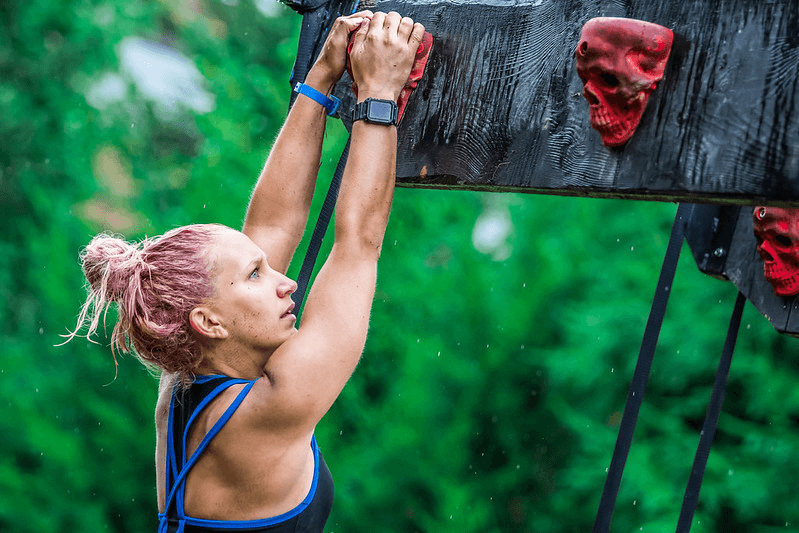
With the bars and holds wet, it will make them harder to maintain a good grip. In addition to using opposing grips I would also encourage matching hands. By this I mean grab each hold with both hands before moving to the next one. Matching hands will often give you more control (aka less extraneous swinging) and limits how long you spend hanging from one arm (which may lead to falling). If aren’t a fan of matching hands, be sure to practice it beforehand. If you don’t believe in its effectiveness, see how long your dead hang is when hanging from one hand and then two hands. I think the results will speak for themselves. As with opposing grips, I’m a fan of matching hands in dry conditions too due to its improved control and less stress on each arm.
4. Take Less Dynamic Movements
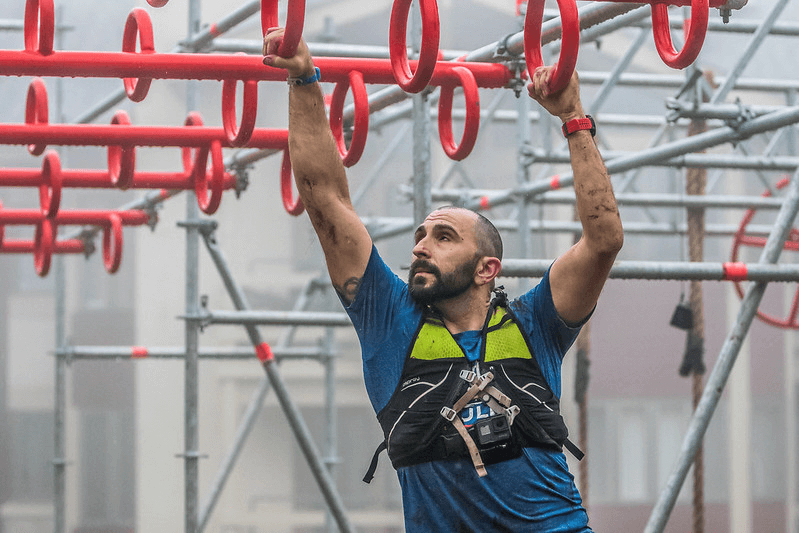
When obstacles are dry you may be able to skip rungs or even lache (completely let go with both hands) from point to point. When things are wet it increases the probability of you slipping off obstacles. Furthermore, you don’t want to have to redo obstacles in the rain so play it safe to make it across. The majority of the race will still be spent running and not doing obstacles so saving an extra second at the risk of falling from an obstacle won’t make a difference in placement for most of the field.
All that being said, if you are near the end of an obstacle and starting to lose grip it might be time for a “hail Mary” or “go for broke” type of maneuver. Going big using one final move might be enough to get you to the bell and onward to the next part of the course.
5. Efficiency is Important

This tip is important for all obstacles in all conditions but is even more important in the rain. Wasteful movements and swinging will leave you hanging on the obstacle longer. In rainy conditions, your grip strength won’t be as good so being efficient may be the difference between success and failure. To improve efficiency the secret is practice and learning about obstacle specific tips (reference the related article Obstacles You Should Be Preparing For at OCRWC).
6. Be Adaptable and Think Through The Problem
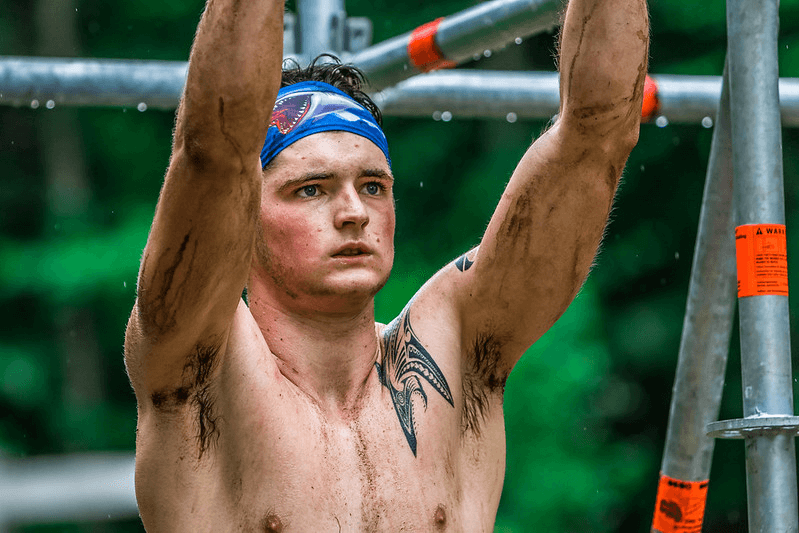
Be prepared to adjust your technique if necessary. While not ideal, the chicken wing hold (hooking your arm through the hold so the pressure is on the inside of your elbow) may be required to make it across the obstacle. This is less than ideal since it can often result in bruising of your arm, but if it makes it across the obstacle within the rules, than it’s something you should keep as an option. Furthermore, think through the problem especially if things start to changes. For example, if the rain lets up mid-race pay attention to obstacle lanes. A lane is in the sun will likely be drier sooner than the one that is in the shade.
When it is raining, the obstacles are wet, your hands are wet and your clothes are wet so there’s no use in sharing tips on methods to dry your hands because it is not going to help. Furthermore, chalk in all its forms (liquid, powder, etc.) are not allowed on the course of OCRWC. Besides not being allowed, chalk won’t help when it is raining.
There’s no perfect solution for obstacles in the rain and it is one of the things that makes our sport uniquely challenging. The rain can shake up the field of competitors and create an outcome that favors those with better grip strength but perhaps less running ability. Prepare for the worst conditions and you’ll show up on race day ready to conquer.
If you want more great obstacle tips sign up below for our newsletter. If you want even more, check out The New Strength & Speed’s Guide to Elite OCR now available in digital.
